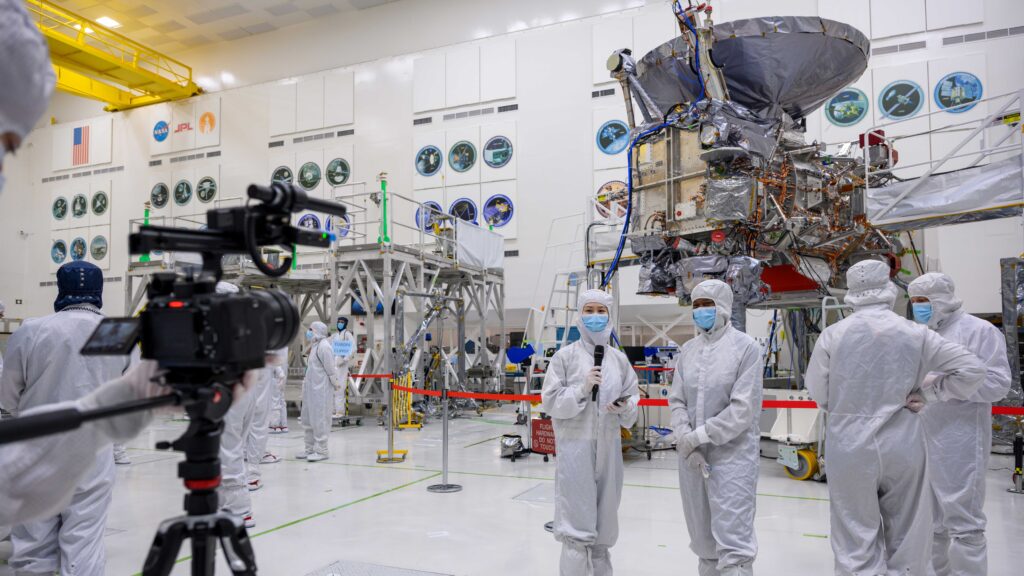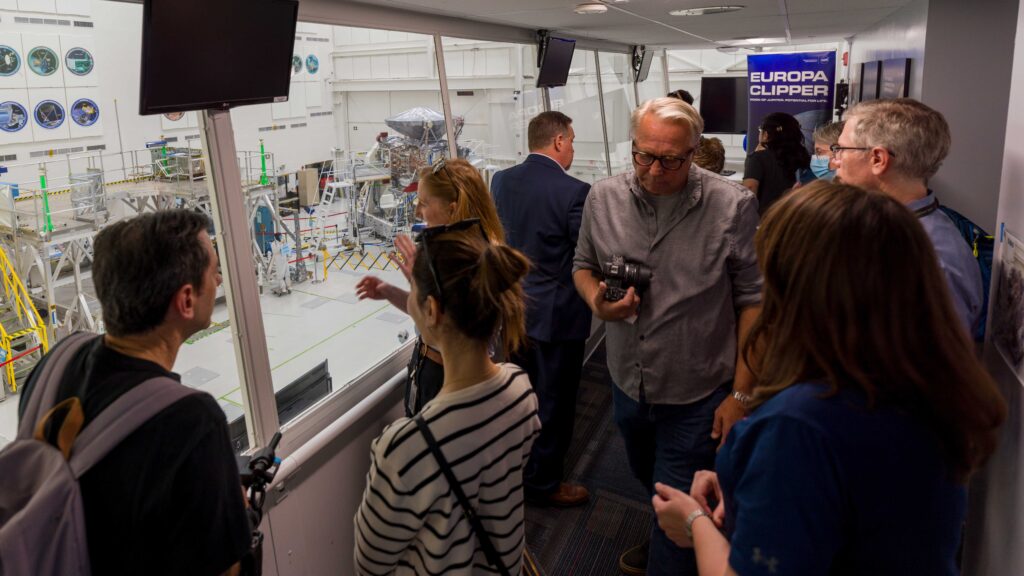Employees of NASA’s Jet Propulsion Laboratory (JPL) made a presentation of the Europa Clipper probe for journalists. It will be launched this autumn.

Europa Clipper has been under development since 2013, and the mission was finally approved by NASA in 2019. The spacecraft is designed to explore Europa, one of Jupiter’s moons, with a huge ocean hiding under its icy surface. Europa Clipper will have to determine its main characteristics and give a basic assessment of its viability.
At the moment, Europa Clipper has already successfully completed most of the pre-flight tests. Therefore, JPL employees gave representatives of the media a tour of the clean room, in which the spacecraft is currently located, and answered the main questions.

Europa Clipper will be launched in October 2024 using a Falcon Heavy rocket. However, even its power is not enough to send the spacecraft directly to Jupiter. Therefore, Europa Clipper will have to perform a couple of additional gravitational maneuvers in the vicinity of Mars and Earth to accelerate. The spacecraft will have to reach Jupiter in 2030.
The mission will receive energy from a block of very impressive solar panels with a total area of 95 m2. While they are near the Earth, they will generate 23 thousand watts of energy. By the time Europa Clipper reaches Jupiter, their output will drop to 700 watts. Another significant problem was the powerful Jovian radiation. To protect against it, all the most critical components of the spacecraft were placed in a special shelter.
At the moment, engineers expect that Europa Clipper will work until 2034. At the end of the mission, the spacecraft will be intentionally crashed against one of Jupiter’s moons. This is necessary to eliminate the possibility that in the future, Europa Clipper will fall on Europa and pollute its surface with terrestrial bacteria. So far, engineers are inclined to send the device to Ganymede.
According to https://phys.org
Follow us on Twitter to get the most interesting space news in time
https://twitter.com/ust_magazine


